Drugs from the sea
One specialised area of Marine Science is the search for new drugs for treatment of diseases from marine sources.
Introduction
The oceans cover over 70% of the Earth's surface and contain an incredible diversity of life with around two million known species of plants, animals and microorganisms and, scientists estimate, there may be up to 9 million species still to be discovered. Marine organisms make up about half of the total biodiversity on the Earth. Thousands of different species of bacteria, fungi and viruses exist in marine ecosystems making up complex food webs involving microorganisms. These microorganisms play highly diverse roles in terms of their ecology and biochemistry.
Our oceans have great potential to provide more novel compounds with great potential as pharmaceuticals, nutritional supplements, cosmetics, chemicals used in agriculture and enzymes, where each of these marine bioproducts has a strong potential market value.
Many pharmacologically important substances have been isolated with unique antimicrobial, antitumor and anti-inflammatory properties. |
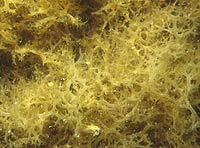
|
| |
|
In the areas of cancer and infectious disease, 60% and 75%, respectively, of new drugs, originate from natural sources. Bacteria have lived on the Earth for several billion years. During this time, bacteria have developed resistance to the naturally occurring antibiotics in their environment.
The first biologically active compounds from marine sources were discovered by accident in the early 1950s, These drugs were spongouridine and spongothymidine and came from the Caribbean sponge (Cryptotheca crypta). Despite this there were only four marine-based drugs on the market and about 40 in development and trialing in 2006. |
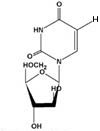
|
Which marine organisms are sources of new drugs?
The main groups of marine animals and plants being examined as new sources of drugs are listed below along with some of the uses of drugs extracted from these organisms.
Sponges
Azidothymidine or AZT, the first antiretroviral medicine approved for treating HIV/AID,S is obtained from the sponge Cryptotethya.
HTI-286, originally isolated from the South African sponge Hemiasterella minor, is being used for treating prostate cancer and is now produced synthetically. |
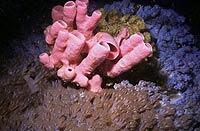
|
| |
|
Corals
Up to fifty percent of bone is made up of a modified form of the inorganic mineral hydroxylapatite. Coral heads can be chemically converted to this mineral which can then be used as a medium for growing new bone tissue. The Fluorescence emanating from The Bahamian brain coral fluoresces (glows) and the chemicals involved could become a source of new types of biotech lights. |
 |
Algae
Brown algae are the source for the drug Fucoidan that can be used to treat leukemia type 1. It is also an anticoagulant and a drug for treating cancer.
Marine Fungus
Researchers are testing an antibiotic and antifouling compound extracted from a marine fungus Cladosporium.
|
|
Cone Snails
Ziconotide is a powerful painkiller from cone snails of species Conus magus. It is used for treating severe chronic pain. |
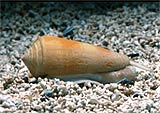
|
Sea Hares
Dolastatins isolated from Sea hares that are found in the Indian Ocean is an important cancer medication under development.
Sea Squirt and Spiny dogfish
Ecteinascidin 743 and Aplidinen isolated from the Sea Squirt Ecteinascidia turbinate from the Carribean Sea are undergoing trials for use as an anti cancer medication.
Squalamine isolated from the Spiny dogfish Squalus acanthias found in the Atlantic and Pacific Oceans is an antibiotic substance under development. |
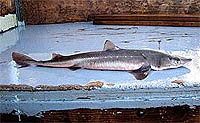
|
| |
|
Tunicates
Aplidine,isolated from the Mediterranean tunicate, Aplidium albicans, has shown activity against certain types of tumor. |
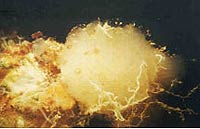
|
Why do we need to develop new drugs from marine sources?
Despite the advances of modern medicine there are many diseases which are major problems to our society. For example, more than 40 million people have been infected by HIV/AIDS. Nearly 1 billion people will become infected with Mycobacterium tuberculosis (TB) between 2000 and 2020. The Ebola virus, the cause of viral hemorrhagic fever syndrome kills 88% of people infected by it. In 2004, more than 70% of pathogenic bacteria were estimated to be resistant to at least one of the currently available antibiotics.
Many marine invertebrates such as sponges, bryozoans and tunicates do not have the ability to move and to escape from predators in this way. These organisms have developed the largest number of organic compounds that are not directly involved in the normal growth, development or reproduction of organisms including some of the most interesting candidates to be used as drugs.
Microorganisms use “chemical warfare” to protect them from attack. In addition, many invertebrates (including sponges, tunicates, bivalves, etc.) are filter feeders, resulting in high concentrations of marine viruses and bacteria in their systems. For their survival, potent antiviral and antibacterials had to be developed to combat any opportunistic infectious organisms. It is hoped that many of these chemicals can be used as the basis for future generations of antimicrobials usable in humans.
Despite the potential shown by marine organisms as sources of new medications, relatively research has occurred in this field. This is because of the prohibitive costs. Many marine organisms are found in remote locations and can require large sums of money just to travel to and from these locations. Additional expenses including the specialized services of divers, submersibles and the personnel’s safety and costs can be very large. This is only the first step as potential drugs then need to be isolated from the marine organisms and then need to be extensively trialed.
References
Drug Discovery From Natural Sources
Young-Won Chin,1 Marcy J. Balunas,1,2 Hee Byung Chai,1 and A. Douglas Kinghorn1
The aaps Journal
Natural product
Marine Biotechnology and its Applications in Making Drugs
by Padma Kumar
Marine Drugs: Implication and Future Studies by
S. Vignesh, A. Raja and R. Arthur James
Coral Reef Biodiversity Benefits to Human Health by Andrew W. Bruckner |

